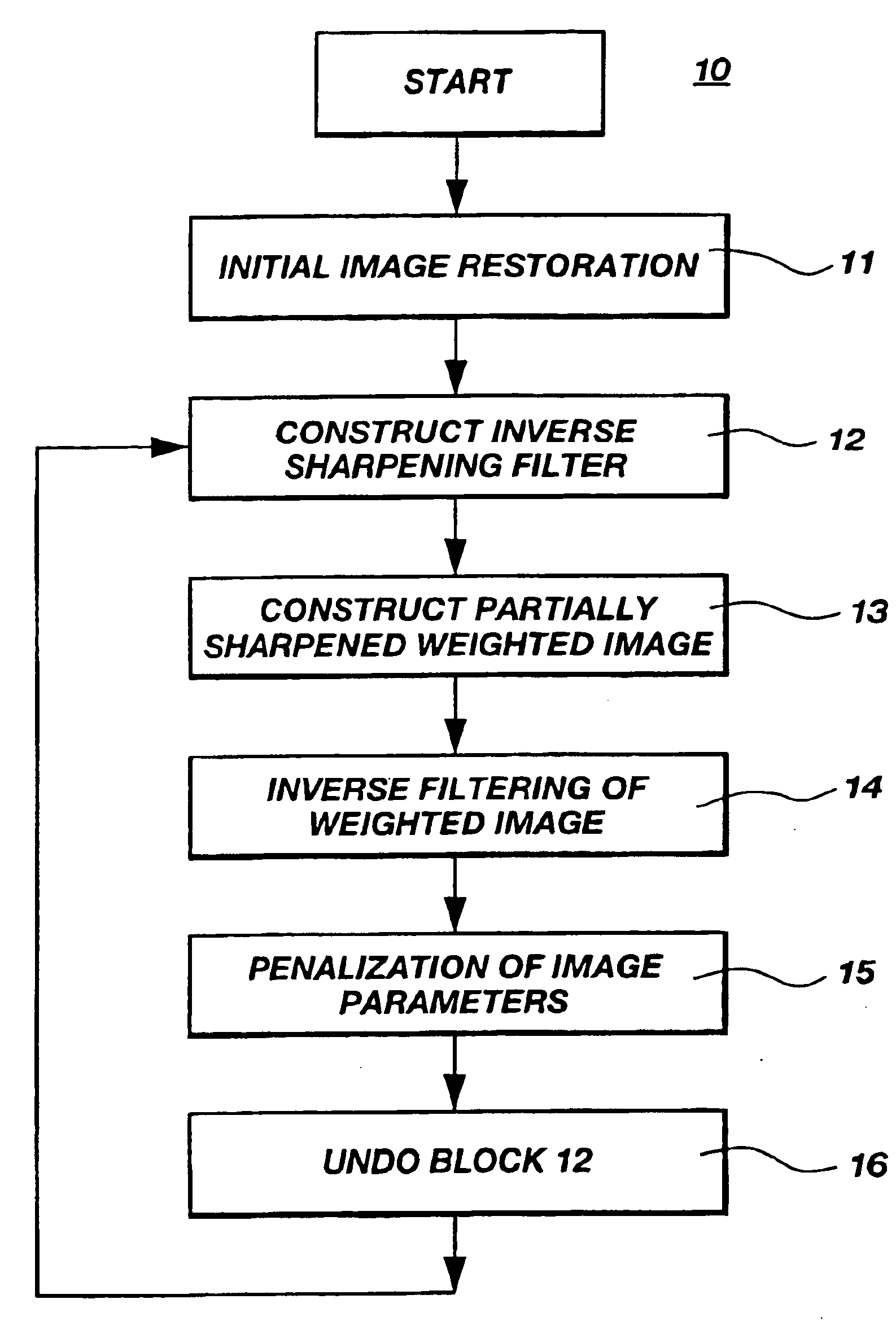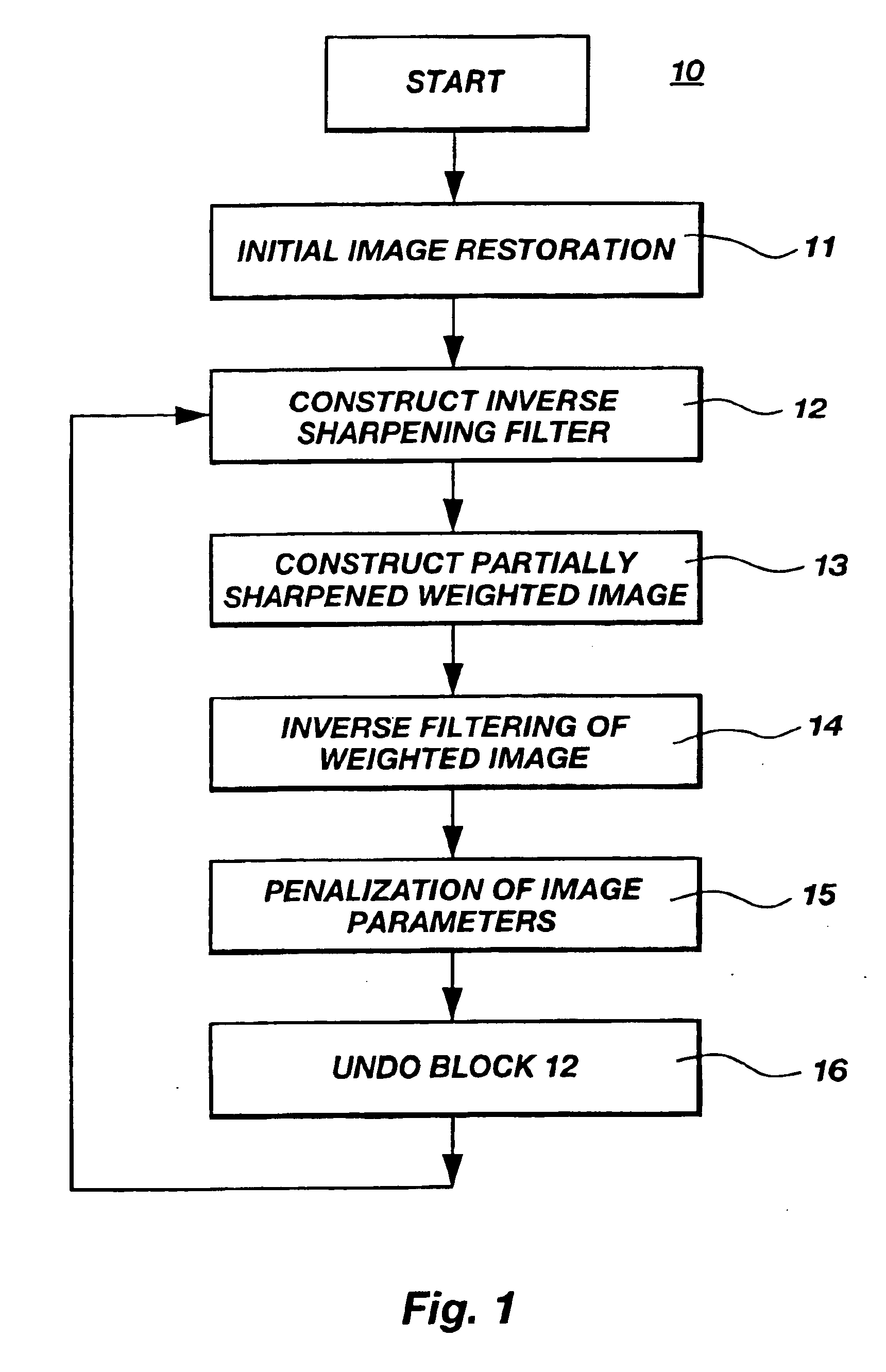Method of digital image enhancement and sharpening
- Summary
- Abstract
- Description
- Claims
- Application Information
AI Technical Summary
Benefits of technology
Problems solved by technology
Method used
Image
Examples
Embodiment Construction
The principles of image enhancement and sharpening can be described as follows. We introduce a new constraint (stabilizer) which minimizes the area where strong image parameters variations and discontinuity occur. We call this new constraint (stabilizer) a minimum gradient support (MGS) constraint. We demonstrate that a MGS constraint in combination with the penalization function helps to generate a stable solution of the linear inverse problem (1) describing the image processing. We call this approach sharpening blurred images.
For the sake of simplicity we will discuss first a minimum support (MS) functional, which provides the image with the minimum area of the anomalous image parameters distribution.
Consider the following integral of the image parameters distribution in domain V: Je(m)=∫vm2m2+e2ⅆv.(9)
We introduce the support of m (denoted sptm) as the combined closed subdomains of V where m±0. We call sptm an image parameter support. Then expression (9) can be modified: Je(m)...
PUM
 Login to View More
Login to View More Abstract
Description
Claims
Application Information
 Login to View More
Login to View More - R&D
- Intellectual Property
- Life Sciences
- Materials
- Tech Scout
- Unparalleled Data Quality
- Higher Quality Content
- 60% Fewer Hallucinations
Browse by: Latest US Patents, China's latest patents, Technical Efficacy Thesaurus, Application Domain, Technology Topic, Popular Technical Reports.
© 2025 PatSnap. All rights reserved.Legal|Privacy policy|Modern Slavery Act Transparency Statement|Sitemap|About US| Contact US: help@patsnap.com



